This is The Typewriter Repairmen's page for the 2023 National Underwater Robotics Challenge, a competition put on by Si Se Puede in Tempe, AZ. This page started out in 2020, but was interrupted by a few years. We're happy to finally be able to continue.
The Typewriter Repairmen is a family robotics club. Jim, the Principal Instigator, is a "retired" mechanical engineer. He has worked with the local FIRST high school robotics team NERDS for the past 17 seasons as an engineering mentor, and discovered that it's about the most fun thing there is. Janet, his wife, is a retired engineer. Jim's brother David is an Electrical Engineer at the University of Arizona's Steward Observatory, and also runs a side business Cathode Corner, which sells neat electronic gadgets.
Link to the 2009 NURC robot notBob
Link to the 2010 NURC robot Babs
Link to the 2012 NURC autonomous robot Biff
All through the project we have been posting videos on youtube.
Contact us at jforb427@gmail.com
June 2, 2023
The finished Technical Journal
June 1, 2023
David took Casper up to Tucson, and he and Linus spent some time getting it balanced, and practicing picking up weights. They also revised the air chuck, to keep the center of flotation above the hook, so the ROV would not tip while lifting weight. David also built another surface control box, so we now have the ability to operate Babs and Casper at the same time, which might make the mission easier. We've all been going on trips and haven't had much time to work on this, but it looks like we'll be ready for the competition next week. Janet has been working on the Technical Journal, and it's almost ready to publish tomorrow. She is also working on the Poster.
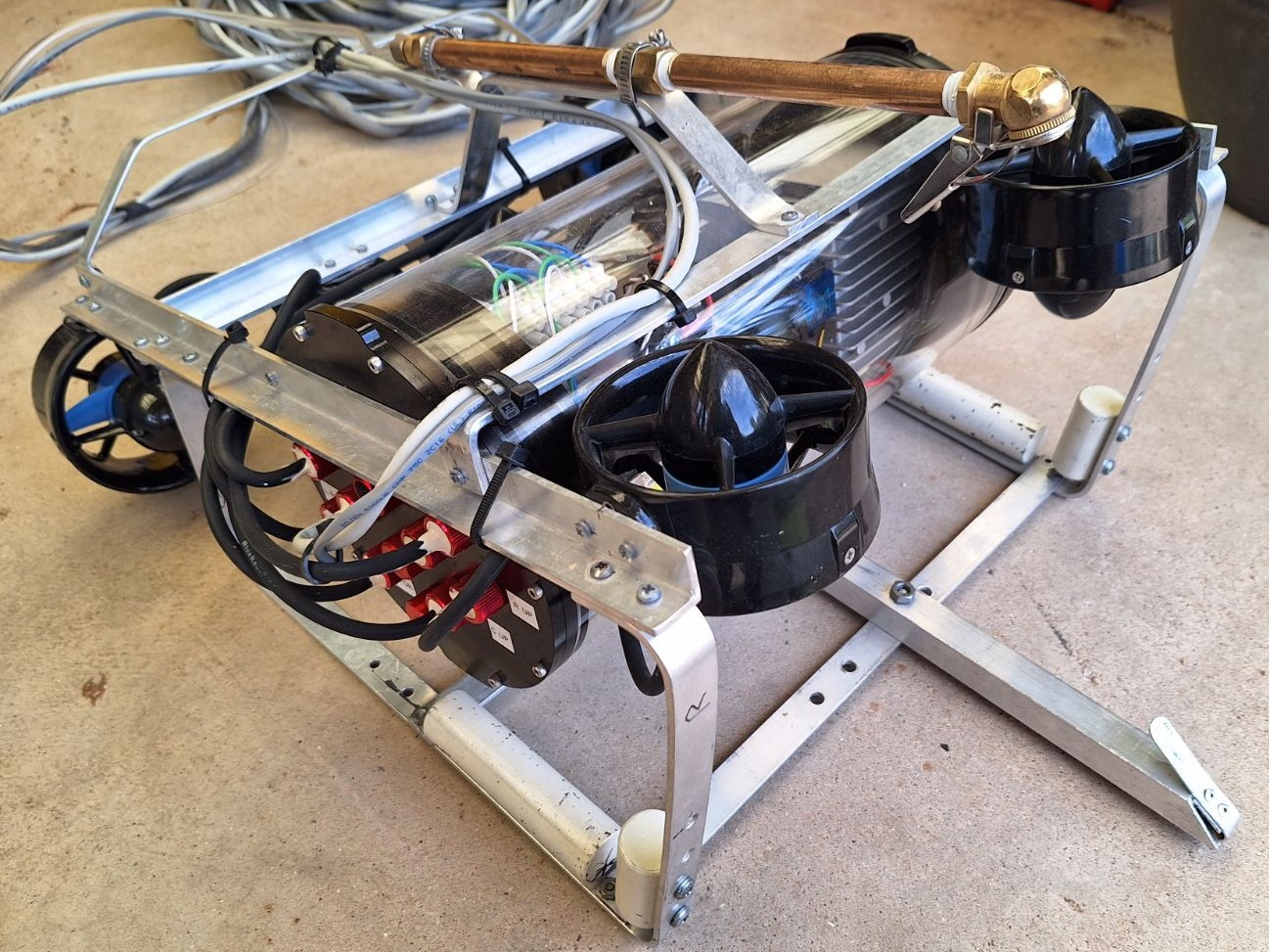
April 16, 2023
Jim got Casper from David, and played with him. First was adding weight, it has a bit too much now, will get more fine adjustment. Then he added modified code, that David emailed him. This was to get the motor controllers to initialize properly, and it mostly works. Jim also reconfigured the Rovotron transmitter to work with the reversed motor direction, and adjusted the vertical thruster power level to make it controllable, as it was a bit too frisky. David will work on figuring out the programming for the depth sensor and range sensor.
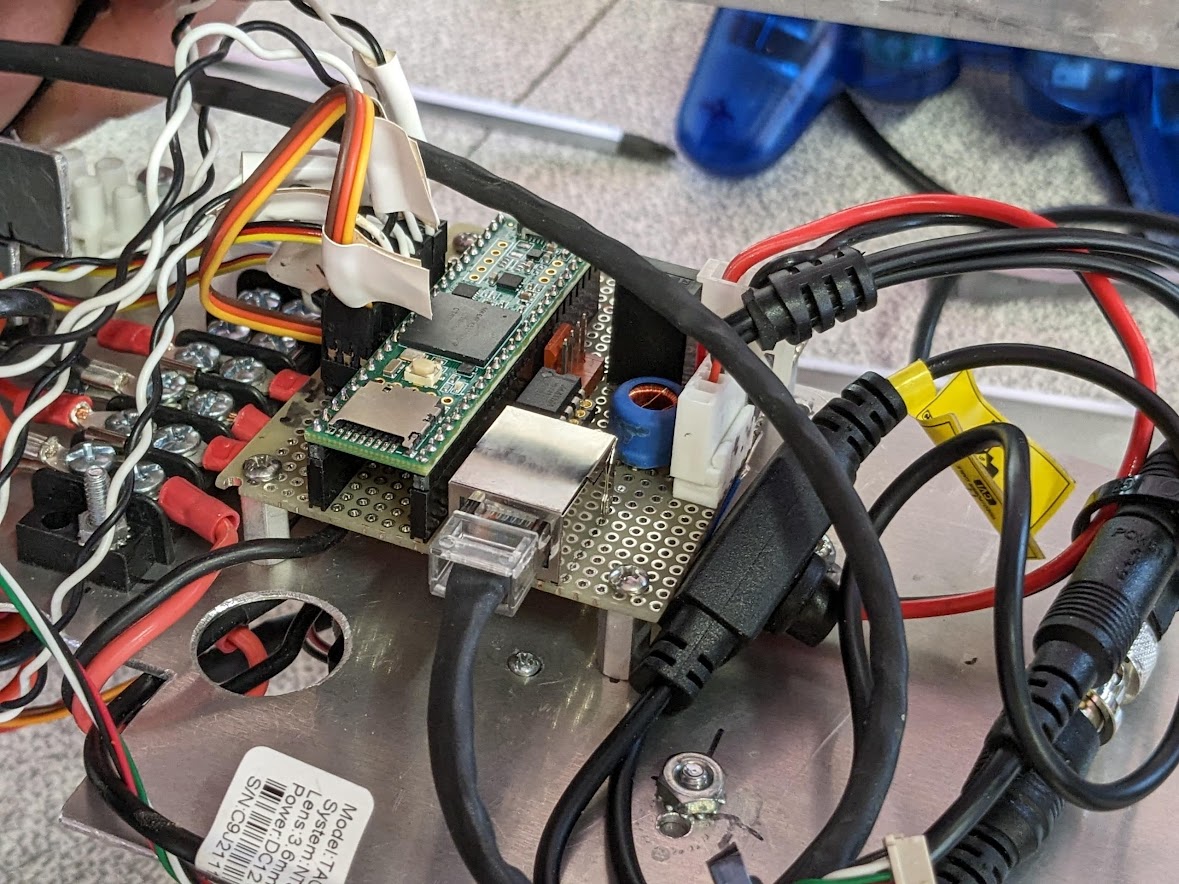
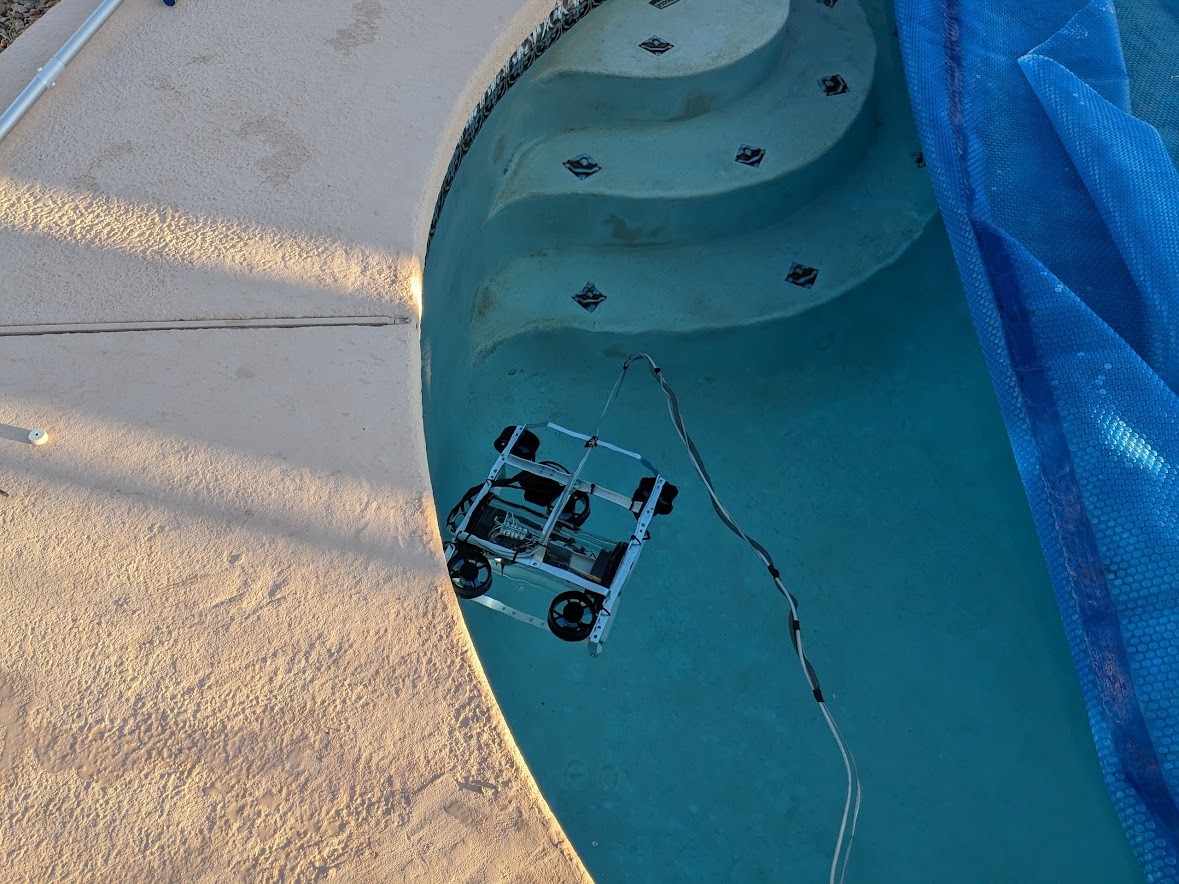
April 13, 2023
David made the new control board and got the electronics working. All six thrusters work, the camera servo works, and the video signal works.
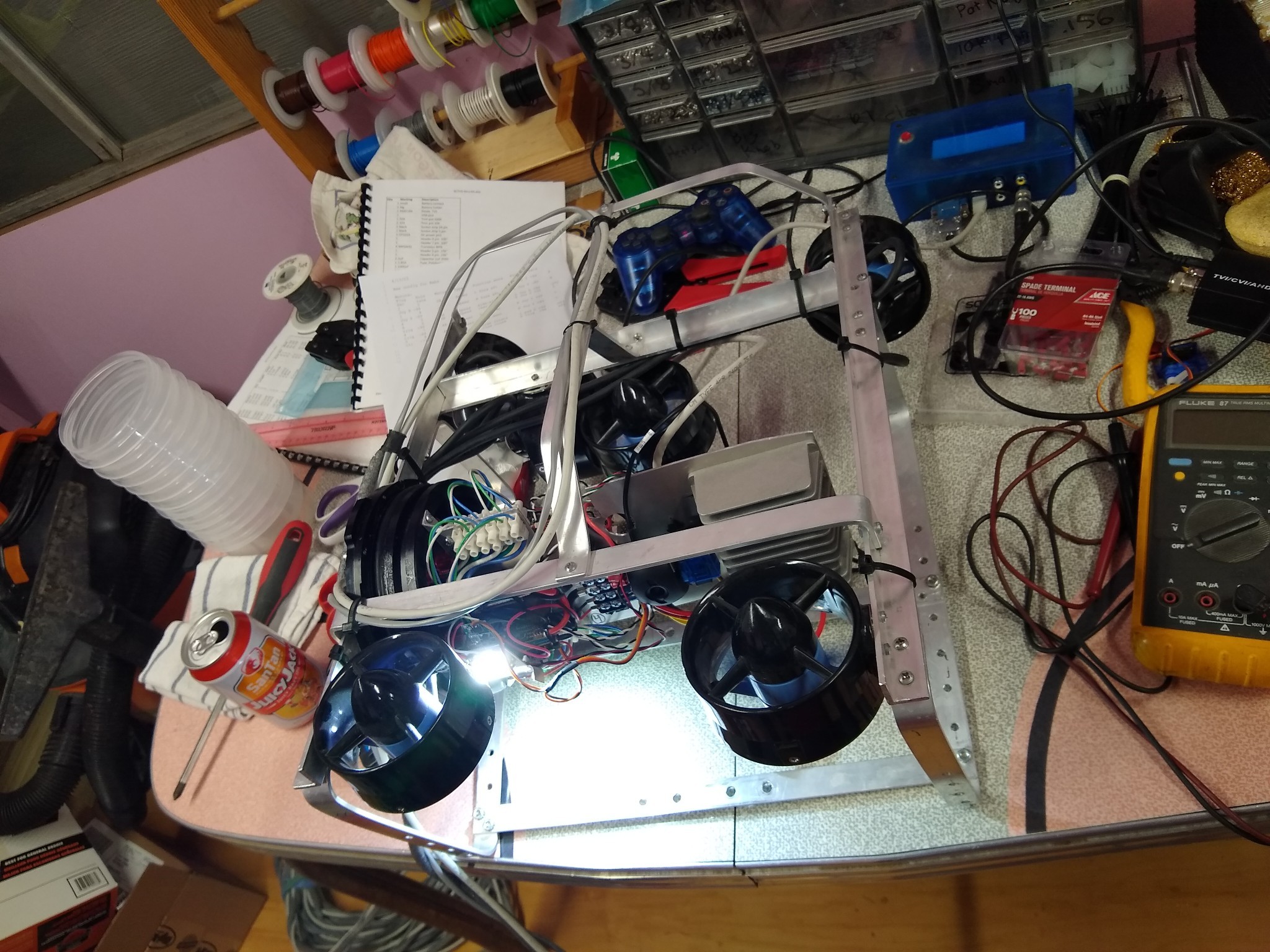
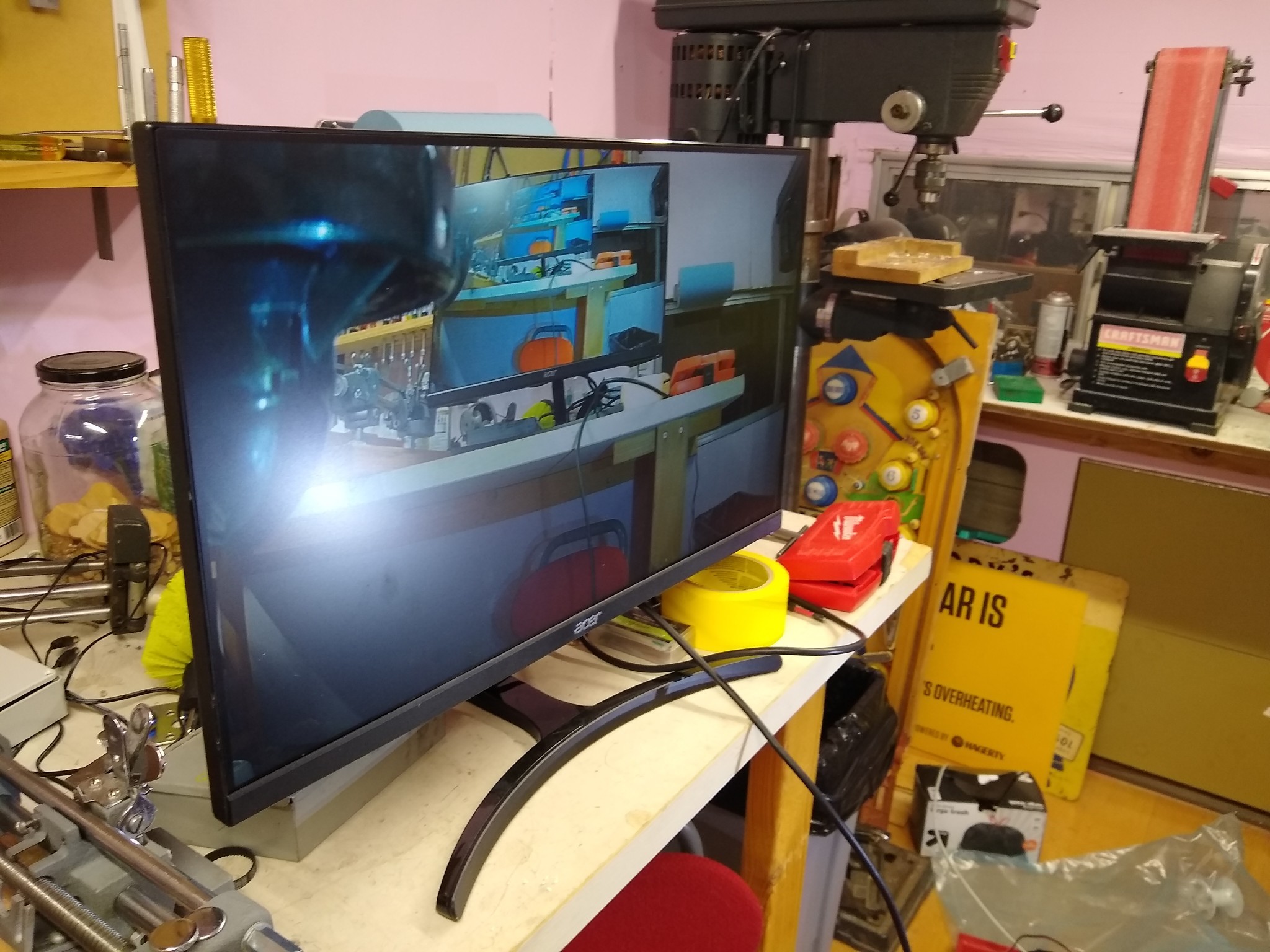
April 9, 2023
Jim delivered Casper to David, so he could make the new control board and get the electronics working.
David made the board from a solder breadboard. The teensy plugs into the two rows of sockets, and the PWM connections will plug into the three row headers. The other connetors will interface with the camera, depth sensor, range sensor, etc. The RJ45 connector will connect to the tether. He also figured out how to use the existing surface box from Babs to work with the new video camera.
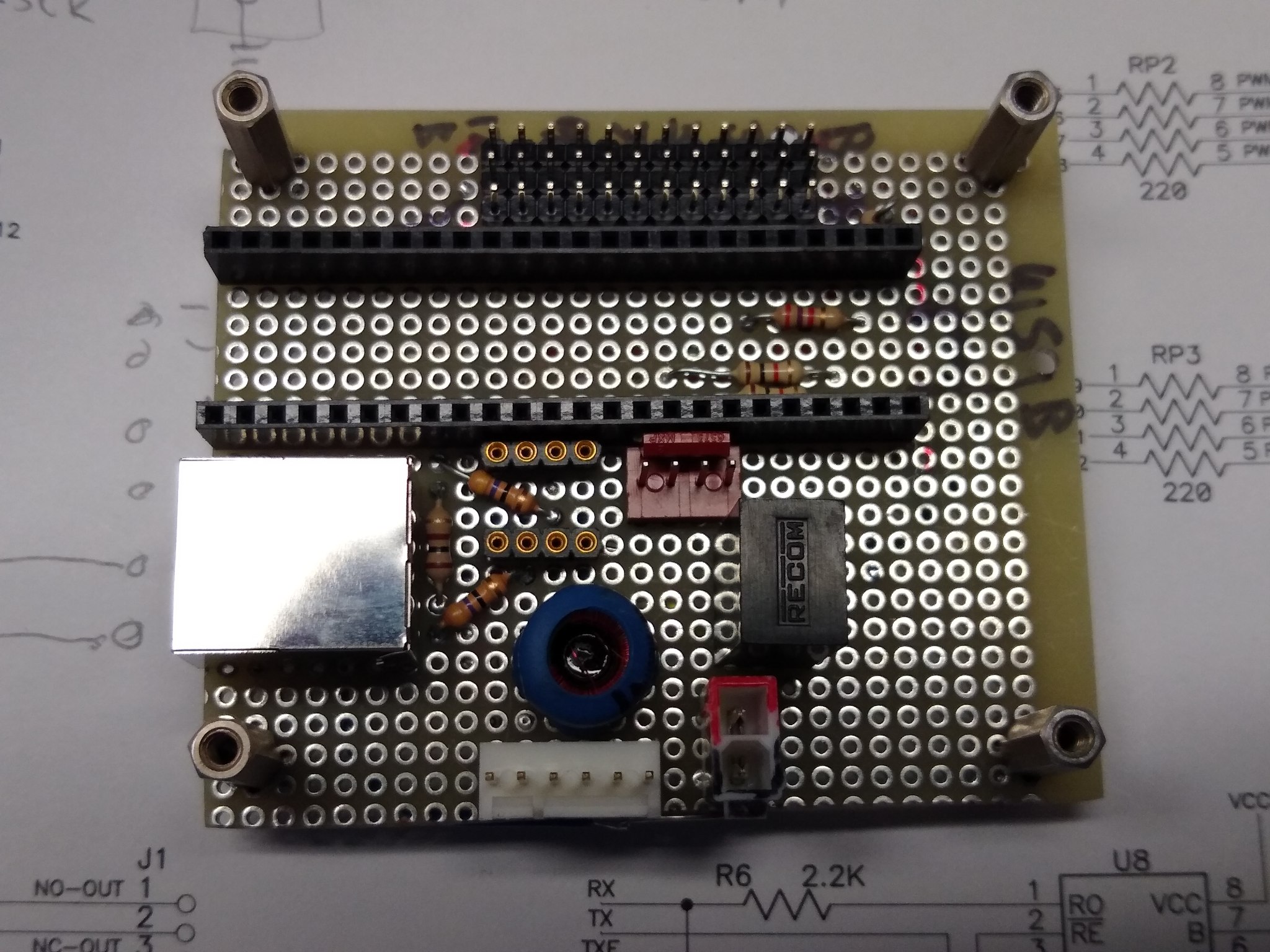
March 26, 2023
We pretty well defined the requirements for the control system, and David is starting on circuit board design, first with the receiver end that goes in the ROV.
We did some brainstorming about ways to lift the artifacts to the surface. Ideas included using a baloon to lift a basket with all of them in it, using a barge with a winch to lift it, increasing the trust of the ROV with more powerful thrusters, and using a balloon to help raise the ROV after it snags an artifact. Jim decided to experiment with the lifting bag (balloon) idea. He purchased an inner tube for a small tire, and a few weights. He also had already a small 12v automotive tire inflator. He did an experiment with a ten pound weight placed over the tube, and the inflator attached to the valve stem. The weight raised up after only 30 seconds of running the compressor. This idea will be likely to work. We can add a small diameter plastic tube to the tether, and strap the inner tube to the top of the ROV temporarily to peform this part of the mission.
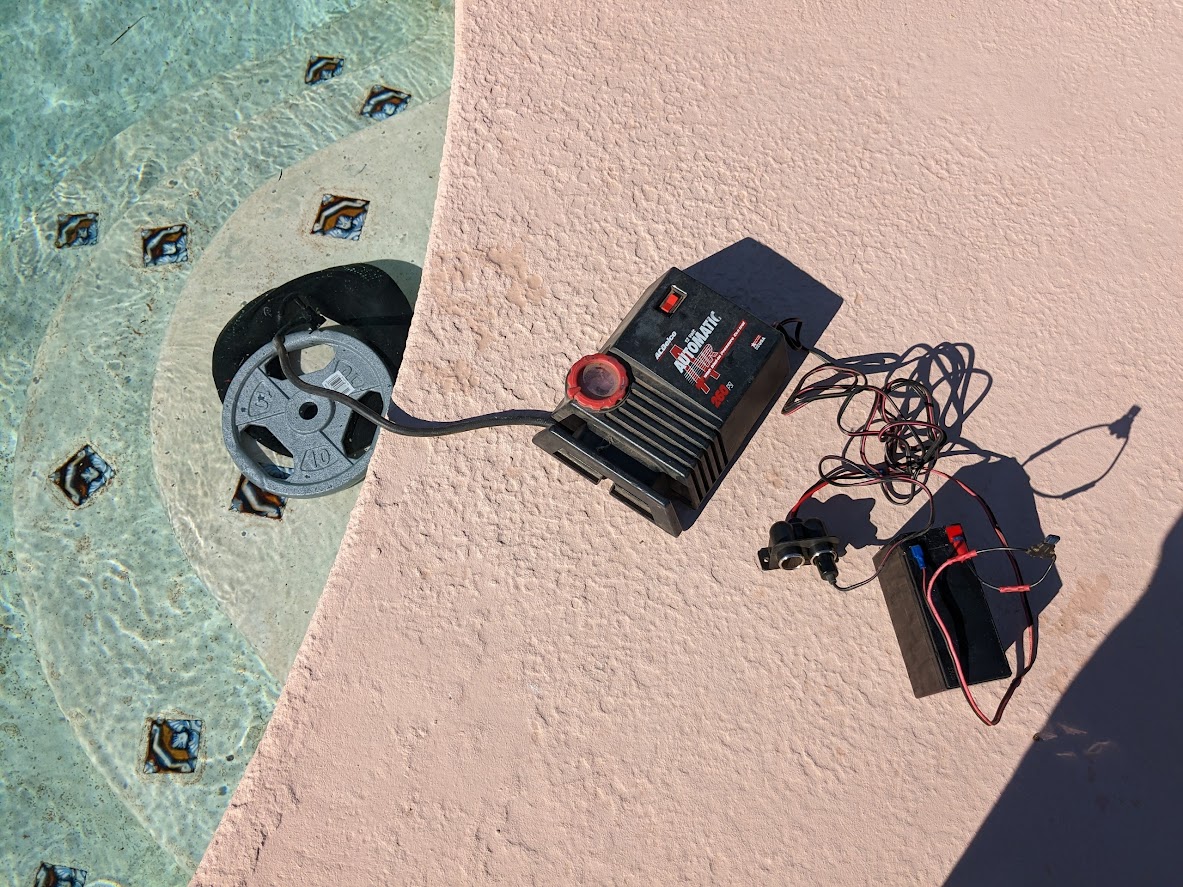
March 21, 2023
David played with Linus's PS4 game controller, by connecting it to a Teensy microcomputer, and loading the software to test it. It works, except for one of the buttons, which he will modify the code to work with. So we have a way to get a game pad into to the system.
Jim got the video system parts in the mail. The camera connects to a balun, which connects to an Ethernet cable, which connects to another balun, which connects to a TVI to HDMI converter box, which connects to a TV set. It works! We can see the camera's image over a long twisted pair cable, which is what we have for a tether. This will give us improved HD imaging, compared to the older composite video system we have in Babs, and no latency like we experienced with the computer based system in 2019.
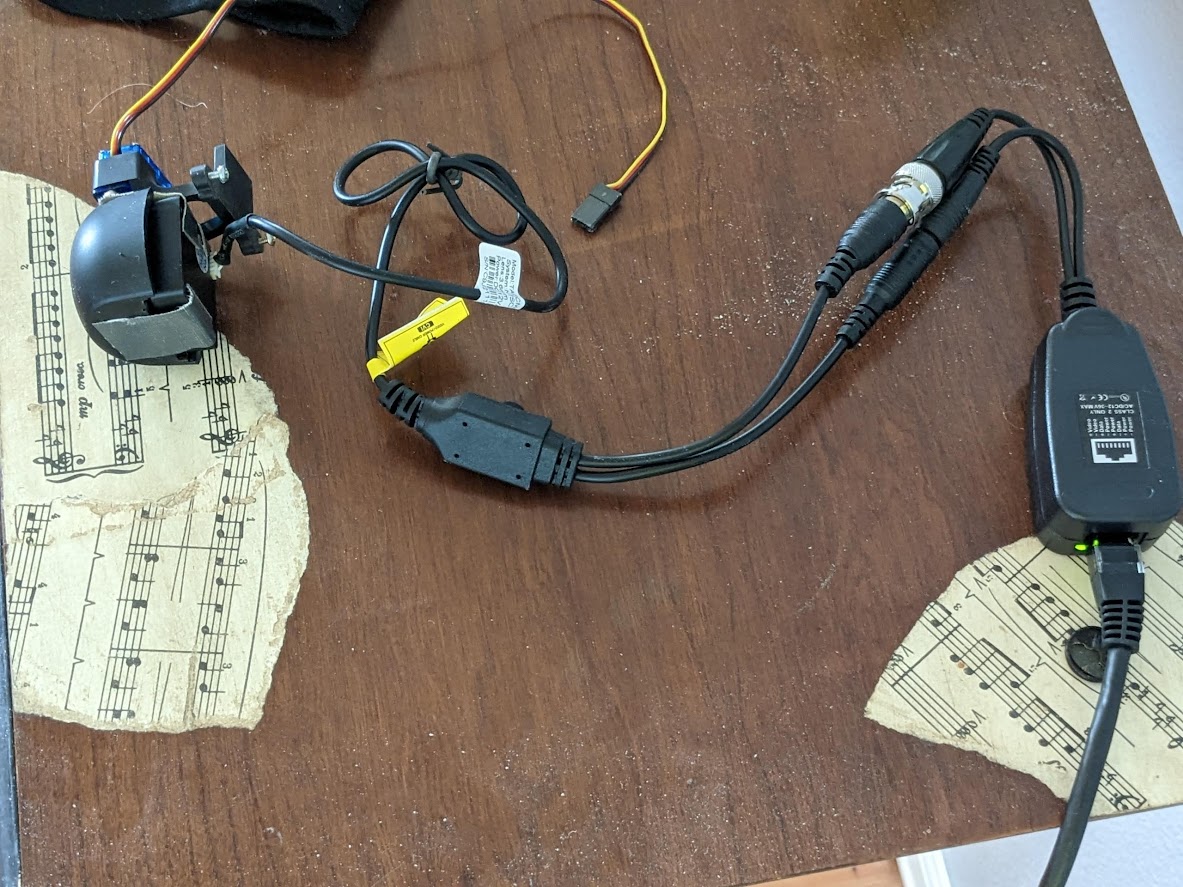
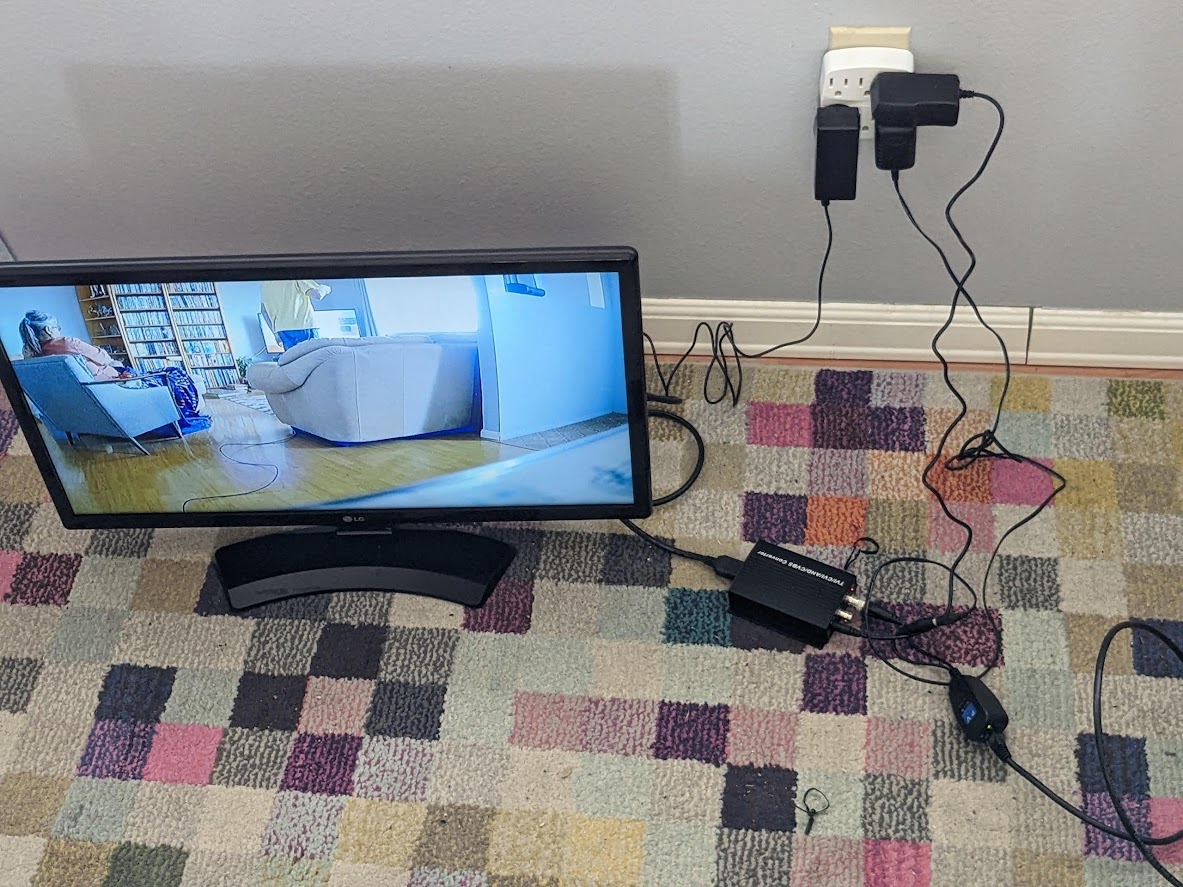
March 19, 2023
David looked into the Teensy for use as both a robot controller and a driver controller. His thought is to duplicate the architecture of Babs, with a Teensy to replace the PIC at each end of the tether. The ROV Teensy receives commands from an RS-485 serial data link and uses them to control the PWM motors and other actuators. Sensor data are read and returned over the RS-485 link. The driver Teensy connects to an XBox gamepad via its host USB port and sends commands. We can use the same sort of 4x20 character LCD display that Babs has.
The advantage of this design is that we can reuse a lot of the Rovotron C code that David wrote for Babs. We need to replace the PS2 gamepad interface with the USB, but there's a library for the Teensy called USBHost_36 and an example program called joystick.ino that handles this type of gamepad as well as PS3 and PS4 types.
The ROV code requires changing the motor driver code from the Rovotron hardware to PWM RC outputs, which there's an Arduino library for. David will look into the work necessary to port the code to the Teensy and adapt it to the Teensy gamepad and motor libraries.
Jim got Babs out, and is going to play with her a bit to remember how ROVs work.
March 18, 2023
Jim started playing with Caspar. Removed a few things from the SCULL, and removed the gripper. The new camera arrived, and he mounted it it to the servo temporarily. Still waiting for the rest of the parts to be able to connect it to a monitor and try it out.
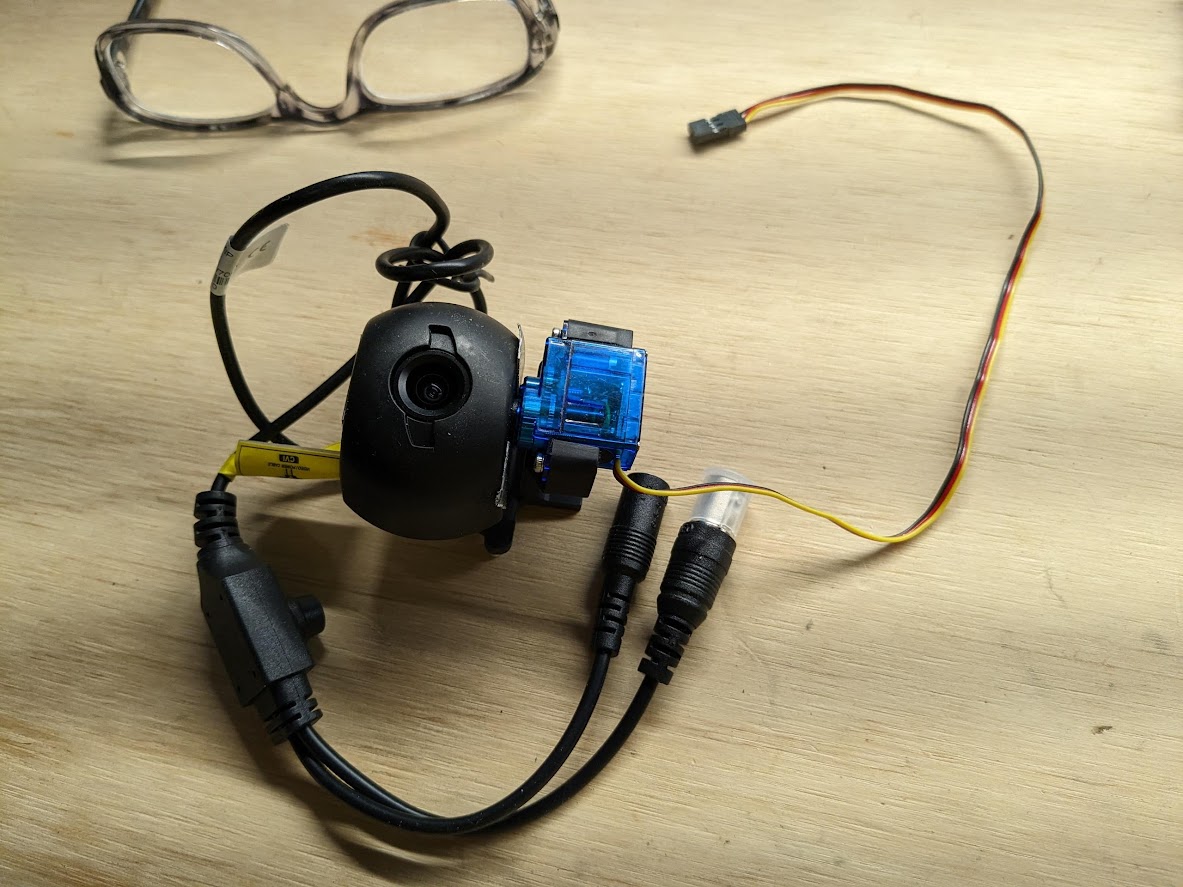
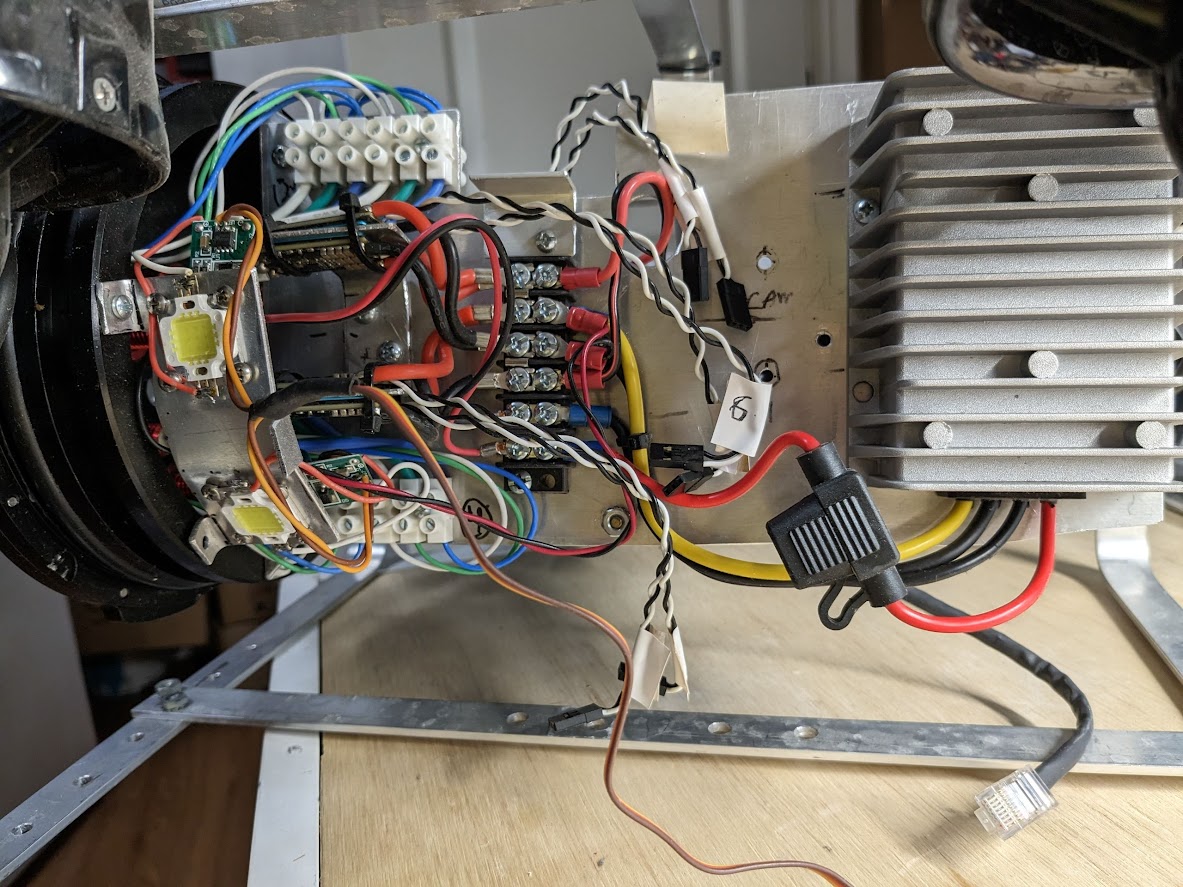
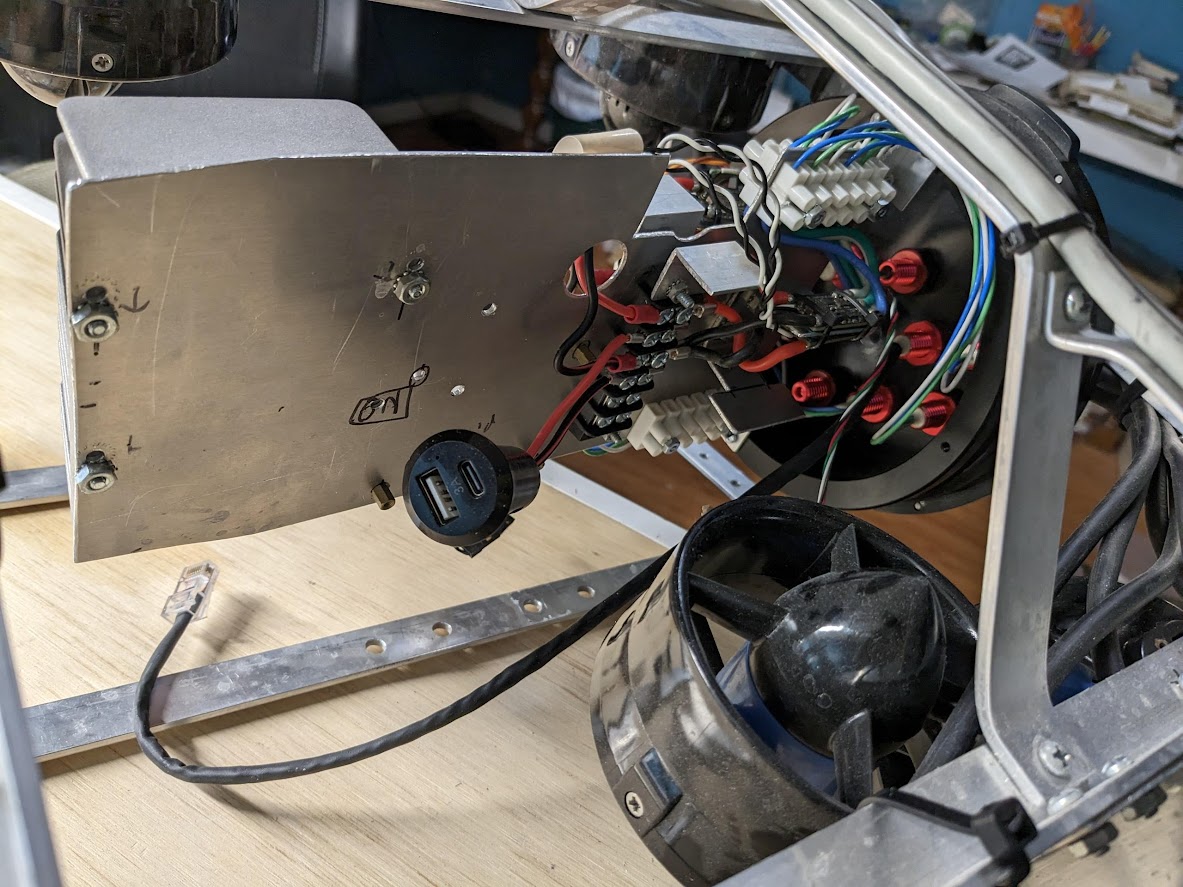
March 17, 2023
We signed up for NURC 2023! after a few years hiatus. Now, we have to remember how we were planning to modify our 2019 robot to play the new game. Carol has been reviewing the mission, and planning out the most time efficient way to complete it. Also figuring out what exactly is required of the ROV to be able to complete all the tasks. Jim has been investigating a new vision system, and ordered some parts to play with, including an HD TVI camera, HD TVI to HDMI comverter, and Coax to Ethernet converters. David has been working on a Teensy controller for another project, and is figuring out how to adapt it to ROV use. Janet paid the bill to enter the competition, and has been planning the work schedule, to make sure we can get the ROV working, tested, and get some practice in before the competition, which is scheduled for June 9-10, 2023.
January 24, 2020
We signed up for NURC 2020! Now, we have to figure out how to modify our 2019 robot to play the new game. We built a new ROV last year, using as many off the shelf parts as possible from Blue ROV. We had some troubles with it, mainly due to the intended use of the design, which is not playing in a competition like this.
We are thinking about making our own control system, hopefully using some commercially available parts, and then programming it to do what we think needs to be done. David and Linus have talked about using a Teensy controller, and we are hoping to get a board from Desert Wave team at ASU.
First, we have to analyze the game requirements. At a quick look, it appears that a claw might not be needed, but being able to hook things might be helpful. Also, there is a part of the game that appears to require a lot of extra buoyancy, or vertical thrust. We might want to modify our design to add another thruster, or at least test what we have to see if it is strong enough.
Caspar, from last year. Expect some changes this year.
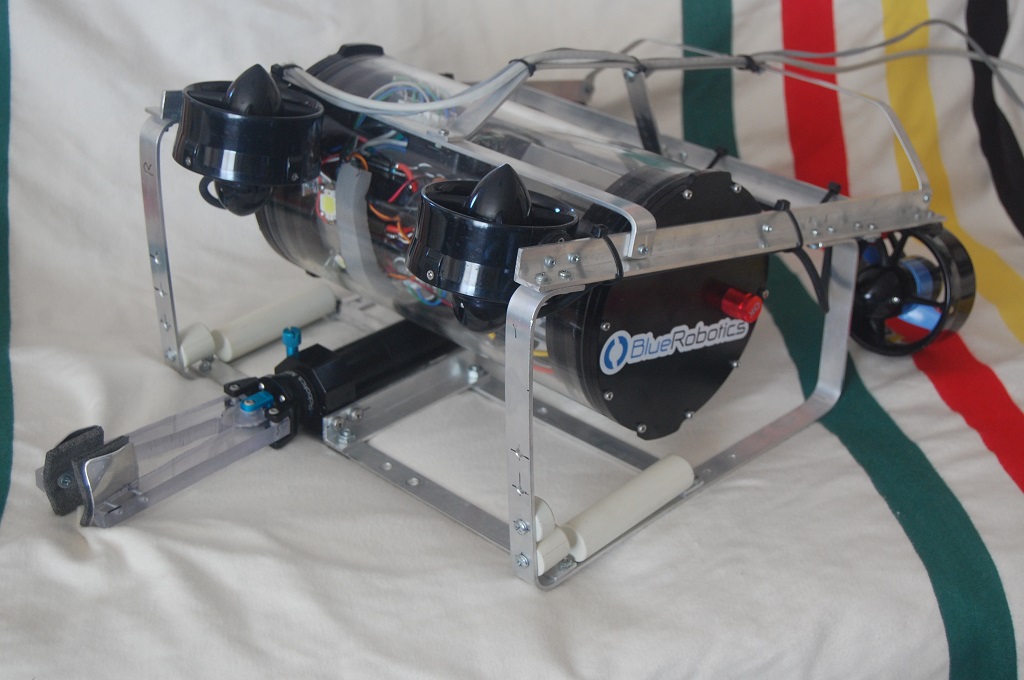
Copyright 2009-2023 Jim Forbes, David Forbes